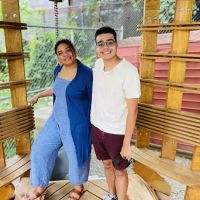Feeding Tree Garden Introduce
In the heart of Brooklyn's historic Bedford-Stuyvesant (Bed-Stuy) neighborhood, amidst the vibrant streetscapes and brownstone blocks, lies a remarkable green space known as Feeding Tree Garden. Located at 340 Tompkins Avenue, this enchanting community garden stands as a testament to the transformative power of local initiative and dedicated stewardship. What was once a vacant lot has been lovingly cultivated into a lush, thriving oasis, offering a serene escape and a vital hub for community connection. As one delighted visitor aptly describes it, Feeding Tree Garden is "an oasis in Bed-Stuy alongside Tranquility Farm, Hattie Carthan! A vacant lot turned into a labor of love with a recently built pavilion by Pratt Architecture students!" This sentiment perfectly captures the spirit and appeal of this unique urban garden.
Feeding Tree Garden is more than just a place where plants grow; it’s a living testament to the resilience and vision of the Bed-Stuy community. It operates as a vital community space, providing residents with access to nature, opportunities for gardening, and a tranquil setting for relaxation and social gatherings. It's an integral part of a network of local green spaces, including the nearby Hattie Carthan Community Garden (sometimes referred to as Tranquility Farm), which collectively contribute to the environmental health and social fabric of the neighborhood. The garden embodies the principles of urban sustainability, promoting green living and fostering a deeper connection between residents and the natural world.
For New Yorkers, especially those residing in Bed-Stuy, Feeding Tree Garden offers a precious opportunity to step away from the urban hustle and immerse themselves in a peaceful environment. It’s a place where the simple beauty of growing things provides solace, where neighbors can connect, and where the efforts of dedicated volunteers are visibly transforming their immediate surroundings. The recent addition of a thoughtfully designed pavilion, a collaborative effort with talented students from Pratt Architecture, further enhances the garden's functionality and aesthetic appeal, making it an even more inviting space for events, workshops, or simply enjoying a quiet afternoon. Feeding Tree Garden is a true local treasure, enriching the lives of those who visit and participate in its ongoing growth.
Feeding Tree Garden is ideally situated at 340 Tompkins Avenue, Brooklyn, NY 11216, USA. This central location places it firmly within the heart of the historic Bedford-Stuyvesant (Bed-Stuy) neighborhood, an area known for its rich cultural heritage, vibrant community, and beautiful brownstone-lined streets. Its position on Tompkins Avenue, a well-trafficked and easily recognizable thoroughfare, makes it a convenient and visible green space for local residents and visitors alike.
The garden’s accessibility is a significant advantage for New Yorkers, as it benefits from Brooklyn’s extensive public transportation network and is highly conducive to walking and biking.
Subway: Feeding Tree Garden is within a reasonable walking distance of several subway stations, providing excellent connectivity to various parts of Brooklyn and Manhattan:
The A and C lines are accessible via the Nostrand Avenue station (approximately a 10-15 minute walk to the west) or the Kingston-Throop Avenues station (also a similar distance to the east). These lines offer direct and express service to Downtown Brooklyn, Manhattan, and Queens.
The G line, which runs north-south through Brooklyn, has stops at Nostrand Avenue or Tompkins Avenue. While the Tompkins Avenue stop is slightly further south on the G line, it offers another convenient option, providing direct access to neighborhoods like Greenpoint, Williamsburg, and Long Island City.
The J and Z lines are also within walking distance, particularly the Gates Avenue station, offering another route to Lower Manhattan and connecting to other parts of Brooklyn and Queens.
Bus: Numerous MTA bus lines serve Tompkins Avenue and surrounding streets, offering direct and frequent service right to the garden's doorstep. The B48 bus runs along Tompkins Avenue itself, providing incredibly convenient access. Other routes like the B25 and B46, which operate on Fulton Street (a major artery just south of the garden), also make the garden easily reachable from various parts of Bed-Stuy and adjacent neighborhoods.
Walking and Biking: For the thousands of residents living within Bed-Stuy, walking to Feeding Tree Garden is a straightforward and enjoyable option. The neighborhood is well-suited for pedestrians, with its charming streets and active sidewalks. Biking is also an increasingly popular mode of transport in Brooklyn, and the garden's location makes it a convenient destination for cyclists. Many local streets offer bike-friendly routes, encouraging a healthy and sustainable way to visit.
Vehicle Access: While street parking can be competitive in Bed-Stuy, limited street parking may be available on Tompkins Avenue and the surrounding residential blocks. However, given the excellent public transportation options and the garden's emphasis on community and sustainability, utilizing transit, walking, or biking is generally recommended for the most convenient and eco-friendly visit.
This strong network of accessibility points ensures that Feeding Tree Garden is a genuinely integrated and easily reachable part of the Bed-Stuy community, welcoming all New Yorkers to enjoy its tranquility and offerings.
Feeding Tree Garden, as a vibrant community garden, offers a range of services designed to enrich the lives of local residents, promote sustainable living, and foster community cohesion. While it may not provide commercial services, its contributions to the neighborhood are invaluable and multifaceted.
Green Space and Horticultural Maintenance: The primary service is the creation and maintenance of a lush, beautiful green space in an urban environment. This includes cultivating various plants, flowers, and potentially some edible crops (though its primary focus is often on beautification and community gathering). The garden provides a vital patch of nature, enhancing air quality and offering a visually appealing respite from city life.
Community Gathering and Relaxation Area: The garden functions as a welcoming public space for informal gatherings, quiet contemplation, and relaxation. Its layout, often featuring benches and open areas, invites locals to sit, read, socialize, or simply enjoy the peaceful atmosphere. This service is crucial for mental well-being and fostering a sense of community.
Newly Built Pavilion for Shelter and Events: A significant recent addition and service is the purpose-built pavilion, designed and constructed by Pratt Architecture students. This structure provides a covered area, offering shelter from sun or light rain, making the garden more usable for longer periods and in various weather conditions. It serves as an ideal spot for workshops, small community meetings, performances, or simply a shaded seating area, enhancing the garden's functionality as a community hub.
Educational Opportunities (Informal): While formal workshops may vary, community gardens often provide informal educational opportunities. Visitors and volunteers can learn about plant care, urban gardening techniques, composting, and environmental stewardship simply by observing, participating in workdays, or conversing with experienced gardeners like "Ena," who was mentioned as very nice in a review. This hands-on learning contributes to local ecological literacy.
Volunteer Engagement: The garden is typically maintained by dedicated volunteers, offering locals a chance to give back to their community, learn gardening skills, and meet like-minded individuals. Volunteering is a core service, empowering residents to actively shape and care for their shared green space.
Aesthetic and Environmental Enhancement: By transforming a vacant lot into a beautiful garden, Feeding Tree Garden provides an invaluable service of urban beautification and environmental improvement. It increases biodiversity, can help manage stormwater, and contributes to a healthier, more pleasant neighborhood environment for everyone.
Cultural and Social Hub: As a community space, the garden often hosts or facilitates small-scale cultural events, neighborly conversations, and informal social interactions. It becomes a backdrop for neighborhood life, fostering connections that might not otherwise occur in a busy city. Its presence alongside other local green spaces like Hattie Carthan Community Garden (Tranquility Farm) strengthens this network of community hubs.
These services collectively position Feeding Tree Garden as a vital asset for Bed-Stuy, offering a unique blend of environmental benefits, recreational opportunities, and community-building initiatives.
Feeding Tree Garden, though a neighborhood-level green space, possesses several compelling features and highlights that make it a truly special place for the Bed-Stuy community. These attributes showcase its unique character and its significant contributions to urban life.
Remarkable Transformation from Vacant Lot: A primary highlight of Feeding Tree Garden is its origin story. It stands as a powerful example of urban renewal, having transformed a long-neglected vacant lot into a vibrant, productive, and beautiful green space. This metamorphosis from "concrete jungle" to "oasis" demonstrates the dedication and vision of the local community, inspiring other urban greening initiatives.
Architecturally Designed Pavilion: A significant and recently added feature is the pavilion, which was notably designed and built by students from Pratt Architecture. This collaboration brings a level of thoughtful design and structural beauty to the garden. The pavilion provides functional covered space, ideal for shade, shelter from light rain, and serves as a focal point for gatherings, workshops, and quiet contemplation, elevating the garden's utility and aesthetic appeal.
Partnership with Hattie Carthan Community Garden/Tranquility Farm: The garden is often mentioned in conjunction with or adjacent to the renowned Hattie Carthan Community Garden (sometimes referred to as Tranquility Farm). This proximity and shared ethos suggest a collaborative spirit among these vital green spaces, strengthening a network of urban agriculture and community building in Bed-Stuy. This highlights a broader, interconnected green infrastructure in the neighborhood.
Lush Greenery and Diverse Plantings: Despite its urban setting, Feeding Tree Garden boasts a rich variety of plant life, contributing to its "oasis" feel. This includes trees, shrubs, and various garden beds filled with flowers and possibly some edibles. The careful cultivation of this greenery provides a sensory delight, improving air quality, attracting local wildlife, and offering a serene visual escape.
Community-Driven and Volunteer-Powered: The garden's ongoing success and maintenance are largely due to the "labor of love" provided by dedicated local volunteers, often guided by figures like "Ena," who is noted for being welcoming. This grassroots, community-driven approach fosters a deep sense of ownership and pride among residents, making it a truly local institution.
Peaceful Urban Retreat: One of its most appealing features for New Yorkers is its ability to provide a genuinely tranquil escape from the city's relentless pace. It's a place where one can find quiet, sit on a bench, and simply enjoy being surrounded by nature, making it an invaluable resource for mental well-being and passive recreation.
Potential for Local Events: While not a large event venue, the presence of the pavilion and open green space makes it suitable for intimate community events, small workshops, informal gatherings, or cultural activations, further enriching neighborhood life.
These features collectively define Feeding Tree Garden as a beloved and impactful green space, demonstrating how a small urban plot can become a significant source of beauty, community, and tranquility for its surrounding neighborhood.
As a community garden and non-profit green space, Feeding Tree Garden does not offer commercial "promotions" or "special offers" in the traditional retail sense. Instead, its "offers" are centered around the valuable benefits it provides to the community, focusing on free access to green space, opportunities for engagement, and enhancements to local quality of life.
Here’s how Feeding Tree Garden "promotes" its value and creates "special offers" for the New York community:
Free Access to a Serene Oasis: The most significant "offer" is the consistent, no-cost availability of a beautifully cultivated and peaceful green environment. In the dense urban fabric of Bed-Stuy, free access to a tranquil outdoor space for relaxation, quiet contemplation, and enjoying nature is an invaluable benefit for mental and physical well-being. It's an open invitation to escape the city's hustle without spending a dime.
Volunteer Opportunities and Hands-On Learning: For locals eager to connect with nature, learn about gardening, or simply give back, the garden regularly offers volunteer opportunities. This is a unique "special offer" for hands-on experience, skill-building, and meeting like-minded individuals. It provides a direct pathway to contributing to and shaping a cherished community asset.
Community Gathering Space and Events: The garden, especially with its new pavilion, serves as a natural gathering spot. While large public events might not be frequent due to its size, it offers a welcoming environment for impromptu neighborly chats, small community meetings, or quiet social interactions. Any community-led workshops or cultural events held there are "special offers" of shared experiences and local enrichment, often free to attendees.
Architectural Beauty and Design Inspiration: The newly built pavilion, designed by Pratt Architecture students, is a "special offer" of public art and innovative urban design. It enhances the garden's aesthetic appeal and provides a functional, inspiring structure for all visitors to appreciate, showcasing local talent and collaborative spirit.
Environmental Benefits for the Neighborhood: The garden itself offers a continuous "promotion" of environmental health. By transforming a vacant lot, it contributes to local biodiversity, helps with stormwater management, and provides fresh oxygen, enhancing the overall quality of life for the surrounding blocks. It’s a natural amenity that benefits everyone.
A Sense of Belonging and Local Pride: As a "labor of love" created and maintained by the community, Feeding Tree Garden fosters a strong sense of local pride and belonging. This intrinsic value, the feeling of shared ownership and accomplishment, is a powerful "offer" that builds a stronger, more connected neighborhood.
To learn about any specific upcoming events, volunteer days, or informal gatherings at Feeding Tree Garden, local residents should look for announcements on community bulletin boards, local Bed-Stuy social media groups, or directly check if the garden has its own social media presence or website, as these are typically the primary channels for community gardens to communicate their activities. They are often part of the NYC Parks GreenThumb network, so their official website (NYC.gov/parks) might also list relevant information.
As a community garden, Feeding Tree Garden is typically managed by local volunteers and operates under the umbrella of programs like NYC Parks GreenThumb. Therefore, direct phone lines for the garden itself are not usually available. However, for general inquiries related to community gardens or to connect with the broader network, you can typically reach out through the New York City Department of Parks & Recreation.
Here is the most relevant contact information:
Garden Name: Feeding Tree Garden
Address: 340 Tompkins Ave, Brooklyn, NY 11216, USA
Primary Contact for Community Gardens (NYC Parks GreenThumb):
Phone (NYC Parks Department General Line): (212) 639-9675
This is the general inquiry line for the New York City Department of Parks & Recreation. When calling, you can inquire about community gardens, specific programs like GreenThumb, or ask if they can provide contact details for the garden's leadership or a public email address. This number is the official channel for broader queries.
Mobile Phone (NYC Parks Department): +1 212-639-9675
This is the same central Parks Department contact number, formatted for mobile use. It connects you to the same information and service line.
Additional Ways to Connect and Find Information:
NYC Parks GreenThumb Website: The GreenThumb program is part of NYC Parks and provides support to community gardens across the city. Their website is an excellent resource for information about gardens, including Feeding Tree Garden, and may have a way to connect with garden leaders.
311: For non-emergency municipal services and information in New York City, you can dial 311. They can often direct your inquiry to the correct department or provide relevant public information.
Social Media: Many community gardens maintain an active presence on social media platforms (e.g., Instagram, Facebook). Searching for "Feeding Tree Garden" on these platforms is often the best way to find current event schedules, volunteer opportunities, and potentially direct messaging options for garden organizers.
On-Site Visits: During regular open hours (which vary by season and volunteer availability), visiting the garden in person is a great way to experience the space and potentially connect with volunteers who can provide direct information or point you to the right contact person.
Local Community Boards: Brooklyn Community Board 3, which covers this area of Bed-Stuy, may also have information about local green spaces and community initiatives. They often hold public meetings where residents can learn more about local projects.
While a direct phone line to the garden itself may not be available, leveraging these resources will help New Yorkers find the most current information and ways to engage with Feeding Tree Garden and its dedicated community members.
Feeding Tree Garden stands as an exceptionally suitable and cherished resource for New York City locals, particularly for those residing in the vibrant and dynamic Bedford-Stuyvesant neighborhood of Brooklyn. Its transformation from a vacant lot into a thriving community green space epitomizes the spirit of grassroots empowerment and offers a multifaceted appeal to residents.
Firstly, the garden provides a crucial escape from the urban hustle. In a dense city environment, access to serene green spaces is vital for mental well-being and relaxation. Feeding Tree Garden offers just that – an "oasis in a concrete jungle," as one local describes it. It’s a peaceful sanctuary where residents can unwind, enjoy the beauty of nature, read a book, or simply find a moment of tranquility amidst their busy lives. This direct access to natural beauty and calm is an invaluable asset for urban dwellers.
Secondly, Feeding Tree Garden is a testament to community collaboration and a hub for social connection. It's a "labor of love" brought to life by dedicated volunteers, fostering a strong sense of collective ownership and pride among neighbors. Locals can actively participate in its upkeep, learn gardening skills, and connect with like-minded individuals, strengthening community bonds. The welcoming atmosphere, highlighted by positive experiences with individuals like "Ena," encourages interaction and builds a more cohesive neighborhood fabric. The presence of the newly built pavilion, a testament to collaboration with Pratt Architecture students, further enhances its capacity as a gathering space, perfect for informal meetings, small workshops, or simply sheltered conversation.
Moreover, the garden serves as a vital educational platform for sustainable living. While it might not be a commercial farm, it showcases urban greening, potentially offering insights into plant care and responsible land use. Its role alongside other respected community gardens, such as Hattie Carthan Community Garden, demonstrates a commitment to nurturing a network of green infrastructure that benefits the entire area environmentally and socially.
Finally, its accessibility is a key factor in its suitability. Located on Tompkins Avenue with excellent public transportation links via subway and bus, the garden is easily reachable for thousands of Bed-Stuy residents. This convenience ensures that its benefits are not limited to a select few but are available to everyone who seeks a deeper connection with nature and community right in their own backyard.
In conclusion, Feeding Tree Garden is more than just a plot of land; it is a living symbol of community resilience, environmental stewardship, and neighborly connection. Its tranquil beauty, functional enhancements, and profound local impact make it an exceptionally suitable and cherished space for New York City locals seeking a vibrant, peaceful, and engaged urban experience.
Feeding Tree Garden Photos
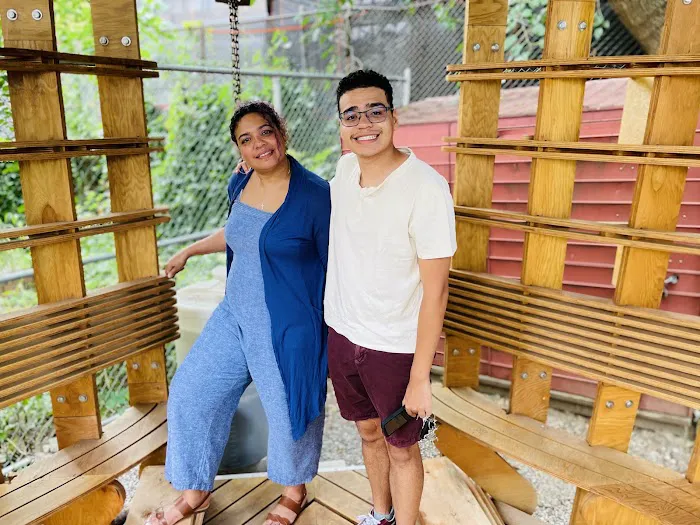
Feeding Tree Garden Location
Feeding Tree Garden
340 Tompkins Ave, Brooklyn, NY 11216, USA
 Feeding Tree Garden
Feeding Tree Garden340 Tompkins Ave
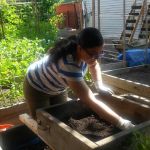 Shiloh Garden
Shiloh Garden323 Monroe St
 First Quincy Street Community Garden
First Quincy Street Community Garden397 Quincy St
 Hancock Community Backyard Garden Park
Hancock Community Backyard Garden Park324 Hancock St
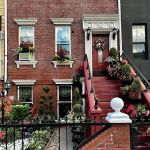 Rhondas Bed and Breakfast
Rhondas Bed and Breakfast26 Van Buren St
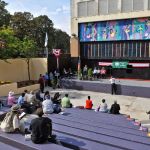 Herbert Von King Park
Herbert Von King Park670 Lafayette Ave
 670 Lafayette Ave
670 Lafayette Ave670 Lafayette Ave
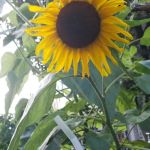 Hattie Carthan Herban Farm
Hattie Carthan Herban Farm49 Van Buren St
 Herbert Von King Park Dog Run
Herbert Von King Park Dog RunHerbert Von King Park Marcy Ave &
 Reggae Den
Reggae DenBrooklyn
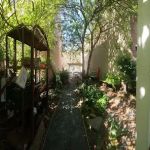 Stars of Hope Community Garden
Stars of Hope Community Garden213 Madison St
 Sankofa Aban Bed & Breakfast
Sankofa Aban Bed & Breakfast107 Macon St
 Hattie Carthan Community Garden
Hattie Carthan Community Garden363-365 Clifton Pl
Feeding Tree Garden Reviews
An oasis in Bed-Stuy alongside Tranquility Farm, Hattie Carthan! A vacant lot turned into a labor of love with a recently built pavilion by Pratt Architecture students! Ena was very nice to us
Sep 25, 2023 · Gabriel Barreiros
More Scenic Spot
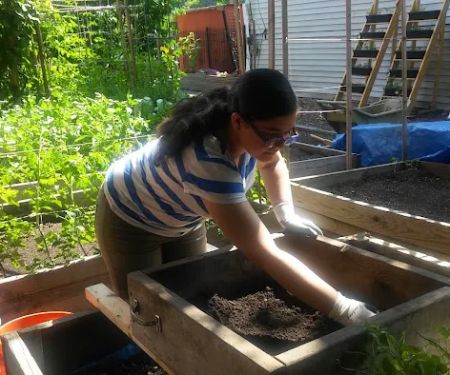 Shiloh Garden3.0 (3 reviews)
Shiloh Garden3.0 (3 reviews)323 Monroe St, Brooklyn, NY 11216, USA
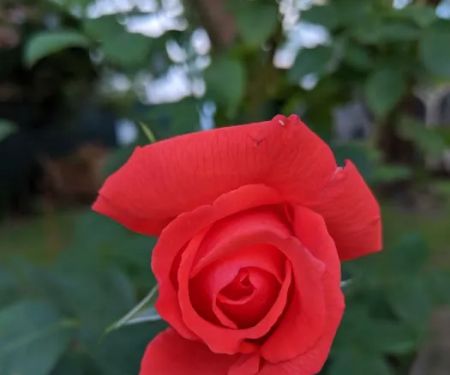 First Quincy Street Community Garden5.0 (4 reviews)
First Quincy Street Community Garden5.0 (4 reviews)397 Quincy St, Brooklyn, NY 11221, USA
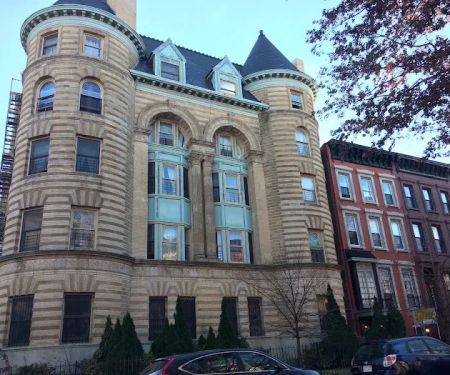 Hancock Community Backyard Garden Park5.0 (6 reviews)
Hancock Community Backyard Garden Park5.0 (6 reviews)324 Hancock St, Brooklyn, NY 11216, USA
 Rhondas Bed and Breakfast4.0 (79 reviews)
Rhondas Bed and Breakfast4.0 (79 reviews)26 Van Buren St, Brooklyn, NY 11221, USA
 Herbert Von King Park4.0 (2530 reviews)
Herbert Von King Park4.0 (2530 reviews)670 Lafayette Ave, Brooklyn, NY 11216, USA
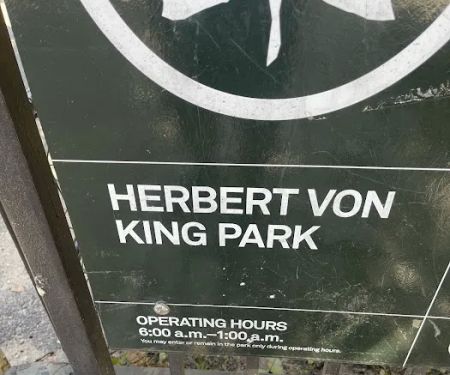 670 Lafayette Ave0.0 (0 reviews)
670 Lafayette Ave0.0 (0 reviews)670 Lafayette Ave, Brooklyn, NY 11216, USA
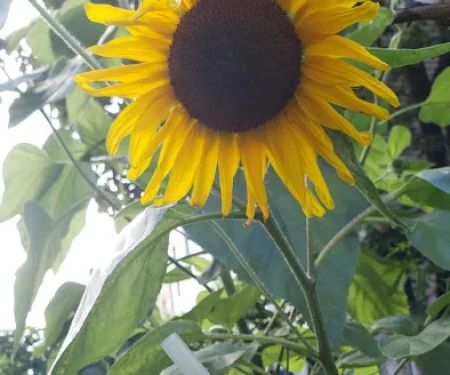 Hattie Carthan Herban Farm4.0 (1 reviews)
Hattie Carthan Herban Farm4.0 (1 reviews)49 Van Buren St, Brooklyn, NY 11221, USA
 Herbert Von King Park Dog Run4.0 (654 reviews)
Herbert Von King Park Dog Run4.0 (654 reviews)Herbert Von King Park Marcy Ave &, Clifton Pl, Brooklyn, NY 11216, USA
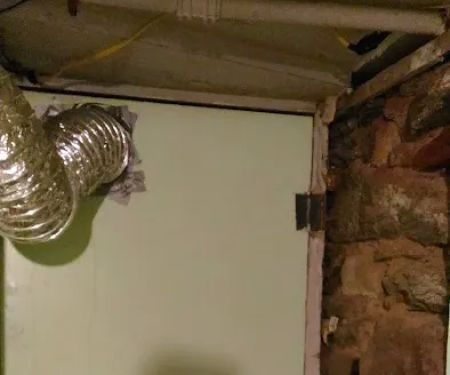 Reggae Den3.0 (10 reviews)
Reggae Den3.0 (10 reviews)Brooklyn, NY 11221, USA
 Stars of Hope Community Garden0.0 (0 reviews)
Stars of Hope Community Garden0.0 (0 reviews)213 Madison St, Brooklyn, NY 11216, USA
 Sankofa Aban Bed & Breakfast4.0 (30 reviews)
Sankofa Aban Bed & Breakfast4.0 (30 reviews)107 Macon St, Brooklyn, NY 11216, USA
 Hattie Carthan Community Garden4.0 (47 reviews)
Hattie Carthan Community Garden4.0 (47 reviews)363-365 Clifton Pl, Brooklyn, NY 11216, USA
Categories
Popular Camping Sites
 Coney Island Boardwalk Garden4.0 (75 reviews)
Coney Island Boardwalk Garden4.0 (75 reviews) The William Hotel Midtown, Sonder4.0 (555 reviews)
The William Hotel Midtown, Sonder4.0 (555 reviews) Shepard Lake Recreation Area0.0 (0 reviews)
Shepard Lake Recreation Area0.0 (0 reviews) Stairway To Heaven4.0 (185 reviews)
Stairway To Heaven4.0 (185 reviews)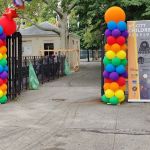 Howard Bennett Playground4.0 (152 reviews)
Howard Bennett Playground4.0 (152 reviews) Isle of Meadows4.0 (10 reviews)
Isle of Meadows4.0 (10 reviews)Trending Camping Blog Posts
 Top Group Travel Destinations in Europe: Best Places for Group Vacations
Top Group Travel Destinations in Europe: Best Places for Group Vacations How to Get Involved in Travel Clans for Social Travel: Explore Group Travel Opportunities
How to Get Involved in Travel Clans for Social Travel: Explore Group Travel Opportunities Best Travel Clans for Sustainable Travel
Best Travel Clans for Sustainable Travel Best Group Vacation Destinations for Friends: Ultimate Travel Ideas
Best Group Vacation Destinations for Friends: Ultimate Travel Ideas Travel Clans for Solo Travelers Looking for Company: Join Unique Travel Communities
Travel Clans for Solo Travelers Looking for Company: Join Unique Travel Communities Best Travel Clans for Women Traveling Together
Best Travel Clans for Women Traveling Together 
